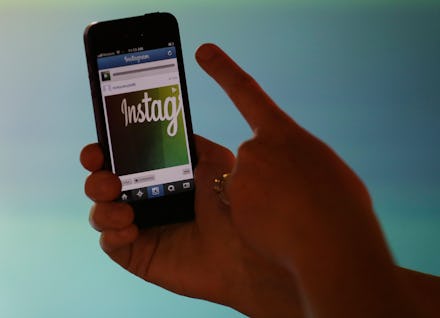The Secret Recipe For Making Instagram Ads That Win Over Millennials

Instagram announced recently that users will soon begin seeing ads in their photo streams. Given that 43% of cellphone users ages 18-29 use the photo-sharing service, brands stand to gain serious in-roads with millennials.
To do so, however, companies will have to go beyond traditional (boring) display campaigns and instead harness what makes Instagram so awesome in the first place.
The reason millennials love Instagram is that it helps us connect with others in a way that is deeper and more meaningful than text-based social media. Instead of just Tweeting about what I’m doing on vacation, I can capture it for the world to see – and with Instagram's now ubiquitous filter effects, I can even make people feel it.
But can advertisers get the same results with content we didn’t ask for?
Well, the early sample ads (there have only been a few) offer a mixed-bag of results. For starters, let’s look at this one from Instagram itself:
First off, it’s kind of a cool shot. In fact, a little too cool if you ask me.
This picture is way too high-quality to look like it comes from a cellphone, especially the lighting. It’s also taken from a weird angle. Is someone floating above this guy?
Totally unbelievable… and I think it would obnoxiously stick out if I were browsing through pictures and suddenly came across it.
Lastly, there’s no text associated with it. No context to say, “Hey, check out this picture I took while I was hanging from the ceiling at work.”
Totally lame.
It’s obvious that becoming part of the natural scenery is going to be a big challenge for these ads, which, as you can tell from the examples, will be clearly marked as such.
For one thing, the way people use Instagram is a lot different than the way they use other social media. While users simultaneously scan text and images from various sources when scrolling through Facebook or Twitter, the interface on Instagram focuses your attention on a single image.
And while this focus might seem at first to be a beneficial feature for advertisers, these ads also run the serious risk of feeling like some brand is butting into your personal space. Even a person’s tamest pictures are somewhat intimate. I mean, imagine if you were flipping through an old-fashioned photo album only to all of a sudden discover an ad for Dodge Ram among the pictures of your 10th birthday.
Whether it’s a gorgeous view or your best friend passed out on the couch, the beauty of Instagram is in capturing the unique quality of a particular moment in time.
This Levi's ad does a great job of doing just that:
The photo here is rich and in-depth without trying to be larger than life. The picture looks like it could have actually been taken by a regular person (although some kind of selfie angle probably would be even more believable).
Adding to their cleverness, the designers used the text component of Instagram to connect the photo with a story, instantly making it part of something much more dynamic than the standard internet banner ad.
It really makes me want to know more about where these two good-looking folks are headed.
Although the Levi's ad shows there’s potential to produce dynamic content, the big question is whether companies can successfully roll these ads into larger campaigns that allow people to interact – with the brands themselves, but also with each other.
Social media is supposed to be social, after all. This is something that’s especially important for advertisers to keep in mind when trying to build a bridge with the most radically connected generation in history.
Do you think Instagram ads will be a boom or a bust? Let me know what you think on Twitter @JakeDParent.